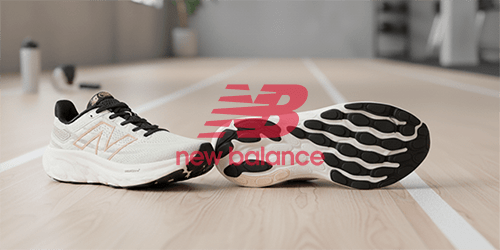In the modern professional environment, time is our most guarded resource. The misconception that meditation requires long, uninterrupted sessions is often the biggest barrier to starting. The truth, supported by emerging science, is that short, high-quality bursts of mindfulness—often called “micro-meditations”—are profoundly effective at managing the chronic, low-grade stress of a busy life.
A 5-minute meditation is not just a quick fix; it is a rapid deployment tool that immediately interrupts the body’s stress response. It is the mental equivalent of stretching a cramped muscle: it releases tension, improves blood flow, and enhances performance. The goal is to move from a state of reaction to a state of response, and five minutes is all you need to bridge that gap.
This comprehensive guide details the precise technique for a powerful five-minute reset, explains the science behind its effectiveness, and provides a framework for integrating these mindful moments into the rest of your demanding day.
Part One The Core 5-Minute Stress Reset Technique
This technique uses three simple, sequential phases to transition your nervous system from alert to calm. Find a comfortable seat with your feet on the floor, ideally sitting away from the backrest.
Phase One The Setup and Anchor Breath (1 Minute)
The first minute is about intentionally breaking the link between your mind and the external chaos.
- Grounding: Place your feet flat on the floor and your hands gently in your lap. Softly close your eyes or lower your gaze to a fixed spot. Feel the weight of your body pressing down into the chair and the floor. Use these sensations as a physical anchor.
- The Intentional Exhale: Take one slow, deep breath in through your nose, expanding your belly and ribs. Exhale slowly through your mouth with a deliberate, audible sigh or “ah.” Repeat this once more. This simple, full exhale is the fastest way to activate the vagus nerve and signal safety to your brain.
- Natural Rhythm: Return to your natural, quiet breathing through your nose. For the rest of the minute, simply observe the subtle sensations of the air moving in and out, noticing the cool air entering and the warmer air exiting.
Phase Two The Rapid Body Scan (3 Minutes)
Physical tension is often where stress hides. This quick scan brings that tension into your awareness so you can consciously release it.
- Head and Face (45 seconds): Bring your full attention to your face. Soften your forehead and the area between your eyebrows. Unclench your jaw by slightly parting your teeth, and let your tongue rest loosely on the floor of your mouth. Relax your eyes.
- Neck and Shoulders (75 seconds): This is the tension hotspot. Inhale and lift your shoulders slightly toward your ears, then as you exhale, let them drop heavily down your back. Imagine the stress melting off your shoulders. Check that your neck is long and your head is balanced directly over your spine.
- Torso and Hands (60 seconds): Allow your chest and abdomen to feel soft, moving freely with the breath. Check your hands. If they are gripping or resting in a tight fist, gently unfurl your fingers. Allow every muscle to soften against the pull of gravity.
Phase Three The Return to Focus and Integration (1 Minute)
This final minute ensures you transition back to your tasks with sustained calm and clarity.
- Acknowledge and Release: Briefly observe the entire body, noticing if there is any remaining tension. Acknowledge the thoughts that have inevitably crept in. Without judgment, simply label them “thinking” and gently bring your attention back to the breath.
- Widen Awareness: Keeping your eyes closed, slowly widen your focus to the sounds around you. Notice sounds without labeling them or reacting to them.
- The Gentle Open: Take one final, slightly deeper breath. As you slowly exhale, gently open your eyes. Spend five seconds looking around the room, making a conscious decision to carry the feeling of centeredness with you as you prepare to move.
Part Two The Science of Micro-Mindfulness
Why is five minutes so effective? The benefits are rooted in neurobiology, proving that consistency matters more than duration.
Interruption of the Stress Cycle
The primary stress hormone is cortisol. When you are constantly rushing or worrying, your body stays flooded with cortisol, leading to chronic anxiety and fatigue. A five-minute mindful pause is a cortisol interrupter. By slowing the breath, you activate the parasympathetic nervous system, the body’s “rest and digest” mode. This process puts the physiological “brakes” on the stress response, quickly lowering heart rate and muscle tension.
Strengthening the Prefrontal Cortex
Regular short meditations, even five minutes long, strengthen the neural pathways in the prefrontal cortex—the part of the brain responsible for executive functions like rational decision-making, planning, and emotional regulation. When you are stressed, the emotional part of the brain (the amygdala) takes over. By repeatedly practicing non-judgmental awareness, you are exercising the prefrontal cortex, making it stronger and faster at regaining control when chaos hits. Over time, you become less reactive and more thoughtful.
Part Three Integrating Micro-Meditations Into Your Workday
The true power of this technique is unlocked when you apply the mindful focus learned in the five minutes to the rest of your day. These are known as “anchors” or “mindful snacks.”
Habit Stacking for Consistency
Do not try to find a new time to meditate. Instead, attach a mindful moment to an activity you already do automatically.
- If this, then that: Use an existing daily habit as your trigger. For example: “If I open my laptop, then I take three deep breaths.” Or, “If I get a cup of coffee, then I focus only on the scent and taste for the first three sips.”
- Transition Anchors: Use transitions—which are natural moments of high stress—as your cue. Before opening a new email, pause for one breath. Before picking up the phone to make a call, pause. Before stepping into a meeting, pause and briefly recall your intention for the conversation.
Focus on Sensory Detail
Take your mind off abstract worry by grounding it in sensory information. This acts as an immediate reset.
- The Mindful Hand Wash: As you wash your hands, focus entirely on the temperature of the water, the texture of the soap, and the feeling of your hands rubbing together. The constant sensory input prevents your mind from wandering back to your to-do list.
- Mindful Waiting: If you are waiting in line for coffee or the elevator, resist the urge to pull out your phone. Instead, spend 30 seconds noticing five sounds you can hear or four colors you can see in your immediate surroundings. This takes you out of anticipatory stress and firmly into the present moment.
Conclusion
The pursuit of sustained stress relief is a marathon, but it is built on a series of short, powerful sprints. By adopting this 5-minute meditation technique, you gain an immediate, powerful tool for calm. By then integrating these “micro-meditations” throughout your day, you train your brain to be resilient, focused, and responsive, ultimately creating a lasting foundation of everyday wellness that can withstand the demands of even the busiest schedule.




